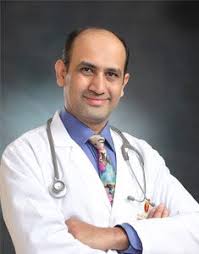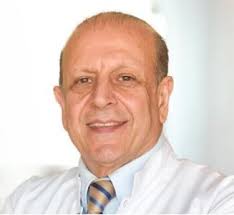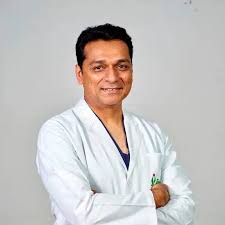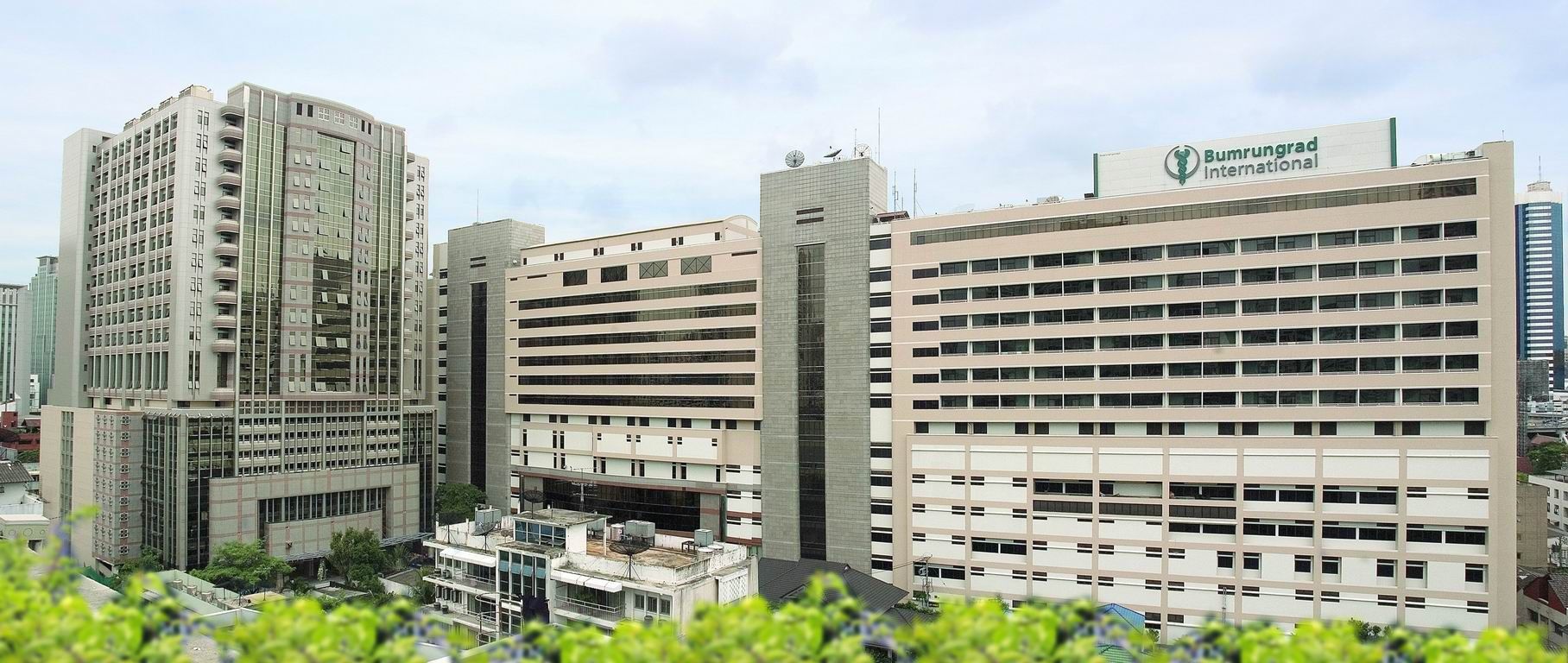Orthopaedic
ACL Reconstruction Treatment
Anterior cruciate ligament
Anterior cruciate ligament reconstruction is a surgical process in which tissue graft of the ACL is being replaced. These ACL is located in the knee. This surgery restores full function of the knee after an injury. The graft is inserted in the knee through an arthroscopic procedure, but before that the torn ligament is removed from the knee.
What is ACL Reconstruction?
Anterior cruciate ligament reconstruction is a surgical process in which tissue graft of the ACL is being replaced. These ACL is located in the knee. This surgery restores full function of the knee after an injury. The graft is inserted in the knee through an arthroscopic procedure, but before that the torn ligament is removed from the knee. ACL injuries are common in people who play sports. The ACL is a band of tissue within the knee, it gets damaged when it is subjected to stretch or tears. When the ACL is healthy, it helps in holding together the bones of the knee. It also helps in keeping the knee stable
Why it’s done?
Ligaments are strong bands of tissue that joins one bone to another. The ACL one of two ligaments that cross the middle of the knee connecting the thighbone (femur) to the shinbone (tibia), which helps in stabilizing the knee joint.
 Most ACL injuries occur during sports and fitness activities that can put stress on the knee:
Most ACL injuries occur during sports and fitness activities that can put stress on the knee:
- Slowing down and changing direction suddenly
- Pivoting with the foot firmly planted
- Landing from a jump incorrectly
- Stopping suddenly
- Receiving a direct blow to the knee
A course of physical therapy can play a vital role in successfully treating an ACL injury for individuals who are relatively inactive, engage in moderate exercise and recreational activities, or play sports that put less pressure on the knees.
An ACL reconstruction is usually recommended to those people who:
- are an athlete and want to continue in their sport, especially if the sport involves jumping, cutting or pivoting
- have more than one ligament or the meniscus in their knee is injured
- have an injury, that is causing their knee to perform their everyday activities
- are young (though other factors, such as activity level and knee instability, are more important factors than age)
Symptoms leading to ACL Reconstruction Surgery
Most people consider ACL reconstruction when symptoms such as instability or pain are experienced from an ACL tear or damage. Common symptoms leading to this treatment include:
- Knee Instability
- Swelling
- Pain
- Limited Range of Motion
- Difficulty with Daily Activities
- Frequent Knee Buckling
- Inability to Participate in Sports
- Visible or Audible Pop During Injury
What Surgical Complications can Happen from ACL Repair Surgery?
- Infection: The cases of infection after arthroscopic ACL reconstruction are very low. There have also been reports of deaths linked to bacterial infection from allograft tissue because of the improper procurement and sterilization techniques.
- Bleeding and numbness: In very rare cases, there may be bleeding due to acute injury to the popliteal artery, and thus results in the weakening or the paralysis of the leg or foot. It is common to have numbness on the outer part of the upper leg next to the location where the incision is being made; this numbness may be temporary or permanent.
- Blood clot: Although very rare, the blood clot in the veins of the calf or thigh can result in death. A blood clot may break off in the bloodstream and travel to the lungs, which results in pulmonary embolism or to the brain, and causes the stroke.
- Instability: Recurrent instability may be due to rupture or stretching of the reconstructed ligament or due to poor surgical technique.
- Stiffness: Knee stiffness or loss of motion may be experienced by patients after surgery.
- Extensor mechanism failure: Rupture of the patellar tendon or patella fracture may be due to the weakening at the site of graft harvest.
- Growth plate injury: In young children or adolescents with ACL tears, early ACL reconstruction can result in plate injury, which results in bone growth problems. The ACL surgery can be postponed until the child is closer to reaching skeletal maturity.
- Kneecap pain: Postoperative anterior knee pain is very common after patellar tendon autograft ACL reconstruction.
ACL Revision Surgery
- ACL revision surgery is performed to create a new ligament in place of the torn ACL.
- There are a number of options for those who are undergoing ACL surgery including the specific surgical technique, the timing of surgery, and the type of graft to use.
- The surgical procedure is an outpatient procedure.
- Rehabilitation after an ACL tear can take several months, and most of the doctors limit their patients recovering from ACL reconstruction for 7-9 months after the time of surgery.
Non-Surgical Treatment
- Non-surgical treatment of a torn ACL mainly focuses on two areas.
- First is developing improved neuromuscular for controlling the lower extremity, essentially the patients are training and teaching the muscles and tendons to support the knee joint.
- Neuromuscular control of the lower extremity can help a person who has a non-functioning ACL and thus helps in preventing ACL injury.
- The second way to control knee stability with nonsurgical treatment is with the use of external supports, like internal brace ACL reconstruction.
- These sports braces are custom fit and mainly designed to be worn while participating in competitive sports activities.
Rehabilitation
Physical therapy is a crucial part of the success of ACL surgery. The success rate of ACL reconstructive surgery depends on the patient's dedication to rigorous physical therapy. With new surgical techniques and stronger graft fixation, physical therapy uses an accelerated course of rehabilitation.
Postoperative Course for ACL Tear Repair:
- For the first 10 to 14 days after surgery, the wound is kept clean and dry, and an early emphasis is given to the ability to fully straighten the knee and restore quadriceps control.
- For reducing the swelling and pain, the knee is covered with ice regularly.
- The surgeon may dictate the use of a postoperative brace and a machine can be used to move the knee through its range of motion.
Rehabilitation of ACL Tear Repair:
- The goals for rehabilitation of ACL reconstruction include reducing knee swelling, strengthening the quadriceps and hamstring muscles, maintaining mobility of the kneecap to prevent anterior knee pain problems, and regaining full range of motion of the knee.
- The patient can return to sports when there is no longer pain or swelling on the knee, the full range of motion has been achieved, and when muscle strength, stamina and functional use of the leg have been restored fully.
- The patient's sense of balance and control of the leg will be restored through exercises, which are designed to improve neuromuscular control. This process generally takes up to 6 months.
- The use of a functional brace when returning to sports is usually not required after a successful ACL reconstruction, but some of the patients may feel a greater sense of ease by wearing one.
Best Hospitals for ACL Reconstruction Surgery
- Artemis Hospital, Gurgaon
- Medanta The Medicity, Gurgaon
- Fortis Memorial Research Institute, Gurgaon
- Max Hospital, Saket
- BLK-Max Super Speciality Hospital, New Delhi
Best Doctors for ACL Reconstruction Surgery
- Dr. I P S Oberoi
- Dr. Vivek Dahiya
- Dr. Subhash Jangid
- Dr. Vikas Gupta
- Dr. Puneet Girdhar
Why Choose GetWellGo for ACL Repair Surgery?
The decisions to rely on the GetWellGo to enhance ACL Reconstruction Treatment are informed by self-serving factors that meet patient requirements and provide the best quality care as discussed below.
Here’s why it stands out:
- Expert Medical Team
- Medical Evacuation
- Advanced Technology
- Personalized Care
- Physiotherapy and Rehabilitation
- Follow-up Services
- Assistance with Travel and Accommodation Arrangements
- Visa Support
- Air Ambulance to India
- Cost-Effective Treatment
Also read list of Best Neuro Hospital in India and Best Cancer Hospital in India
FAQ
1. What are the advantages of reconstructive surgery for the anterior cruciate ligament?
- Eliminates feelings of joint instability and helps to lessen such a nuisance as a feeling that the knee might ‘buckle.’
- Albe to return to sports and physical activity.
- Avoids aggravation of the knee condition that resulted in cartilage; wear and tear or even a torn meniscus.
- Decreases pain and increases overall knee function and improvement in knee related quality of life.
2. How successful is the ACL reconstruction?
- The success rate varies between 85-95% for regaining knee stability after a Read More about ACL reconstruction and permitting patients to resume their preferred activities. Overall long-term prognosis is much better and even more enhanced when the host patient is subjected to proper rehabilitation.
3. What is the time it takes for rehabilitation after having an ACL reconstruction surgery?
- Initial Recovery: 2-6 weeks for swelling reduction and to get the patient at least some initial mobilizations possible.
- Physical Therapy: They involve suturing of the wound, begin immediately after the surgery and lasts for 6- 9 months.
- Return to Sports: Usually, it occurs after 9-12 months after the beginning of training for a particular physical activity.
Recovery depends on the patient, surgeon’s technique, and patient’s compliance to exercises.
4. Do all ACL tears require an ACL reconstruction?
- Not necessarily, not all ACL tears require surgical intervention. For patients who can perform little or no activities, or have relatively mild symptoms, non-surgical interventions like physical therapy and bracing may be enough. Surgery is only advised to active patients or those who are experiencing significant instability.
TREATMENT-RELATED QUESTIONS
GetWellGo will provide you end-to-end guidance and assistance and that will include finding relevant and the best doctors for you in India.
A relationship manager from GetWellGo will be assigned to you who will prepare your case, share with multiple doctors and hospitals and get back to you with a treatment plan, cost of treatment and other useful information. The relationship manager will take care of all details related to your visit and successful return & recovery.
Yes, if you wish GetWellGo can assist you in getting your appointments fixed with multiple doctors and hospitals, which will assist you in getting the second opinion and will help you in cost comparison as well.
Yes, our professional medical team will help you in getting the estimated cost for the treatment. The cost as you may be aware depends on the medical condition, the choice of treatment, the type of room opted for etc. All your medical history and essential treatment details would be analyzed by the team of experts in the hospitals. They will also provide you with the various types of rooms/accommodation packages available and you have to make the selection. Charges are likely to vary by the type of room you take.
You have to check with your health insurance provider for the details.
The price that you get from GetWellGo is directly from the hospital, it is also discounted and lowest possible in most cases. We help you in getting the best price possible.
No, we don't charge patients for any service or convenience fee. All healthcare services GetWellGo provide are free of cost.
Top Doctors for Orthopaedic
Top Hospitals for Orthopaedic
Contact Us Now!
Fill the form below to get in touch with our experts.



.jpg)



